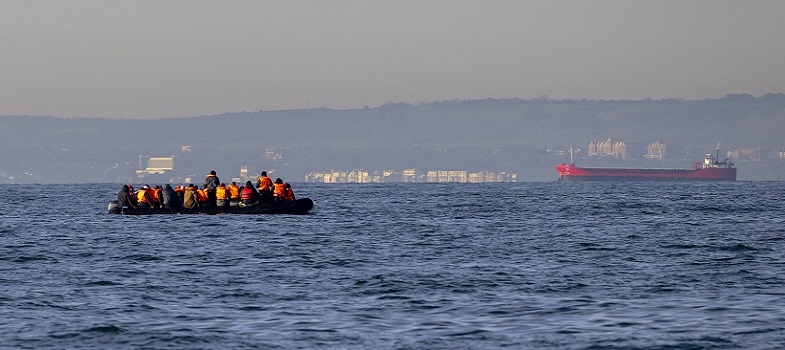2.1.2 The different maritime zones
In order to understand what the different maritime zones are, we need to establish first what is called the ‘baseline’. This is measured from the low-water mark (Article 5, UNCLOS) which is the level of the sea reached at low tide. The rules concerning baselines are particularly important in law because they determine whether a state has jurisdiction over certain areas of the sea. As it may be imagined, the rules regarding where baselines begin have been subject to dispute. Behind the baseline are internal waters. Beyond the baseline we can establish the following different zones.
Internal waters
Internal waters are waters ‘which lie inward of the baseline from which the territorial sea is measured’ (UN General Assembly, Convention on the Law of the Sea 1982, Article 8(1)). This includes, for example, ports and harbours, estuaries, or landward waters from the closing line of bays. States have sovereignty, or legal control, over their internal waters.
Territorial waters
Territorial waters can now be claimed up to 12 nautical miles (Article 3, UNCLOS) from the baseline. Within the territorial sea, a coastal state is sovereign and can exercise its powers on several issues, subject to some exceptions regarding, for example, the right to innocent passage. This gives the right of a ship to pass through territorial waters of a state, so long as they are not acting in a manner which is prejudicial to the peace, good order, or security of the state. States may cite a breach of the right to innocent passage and close the ports to a SAR (or any) vessel or prevent people from disembarking a vessel.
Under Article 21(1) of UNCLOS, the state may adopt laws and regulations relating to several areas. These include such areas as the safety of maritime traffic, the conservation of living resources, or importantly for SAR, under Article 21(1)(h) ‘the prevention of infringement of the customs, fiscal, immigration or sanitary laws and regulations of the coastal State’. States may, for example, justify actions against SAR vessels to prevent disembarkation, or the closure of ports to a foreign vessel under Article 27 of UNCLOS, which relates to criminal jurisdiction of a foreign flagged vessel.
Contiguous zone
Article 33 of UNCLOS (and the earlier Convention on the Territorial Sea and the Contiguous Zone 1958) established that the contiguous zone is a maritime area running alongside the territorial sea. The contiguous zone must be declared explicitly by the state and may extend up to 24 nautical miles from the coast.
A state has more limited powers in the contiguous zone, but again, importantly for SAR powers, these extend to ‘customs, fiscal, immigration or sanitary laws and regulations’. In this zone, the state can act to prevent, inter alia, violations of its immigration laws, under Article 19(2)(g) and Article 33(1)(a) of UNCLOS.
Exclusive economic zones and the continental shelf
Not generally relevant to the issue of SAR, exclusive economic zones allow states to claim rights and duties to an area up to 200 nautical miles from their coastland for the purposes of exploration, exploitation, conservation, and management of living and non-living natural resources found within the zone (Article 56(a), UNCLOS).
Continental shelves refer to the landmasses that extend from continents and can be rich in resources. The coastal state has rights over exploration and exploitation of the continental shelf to its end, or to a distance of 200 nautical miles (although this may be extended).
Freedom of the high seas
Beyond the exclusive economic zone and continental shelf, lie the high seas. Although the freedom of the high seas is well established, it is an urban myth that there is no law covering the high seas. All vessels must be registered under the law of a state, have an established link and fly their flag, under Article 92 of UNCLOS.
The term ‘flagged ship’ refers to a ship with a flag of a state. That state becomes known as the ‘flag state’. It is then subject to the law of that state. If there are migrants on a flagged vessel, they temporarily become ‘nationals’ of that flag state for the purposes of legal control and protection over them.
If a ship flies no flag, any state may exercise jurisdiction over it. An unflagged migrant boat when rescued by a flagged vessel will come under the protection of the flag state. They are then subject to the legal control and protection of that state (including human rights protection).
UNCLOS recognises exceptions where a state may exercise legal powers over vessels covered by another flag. These include, for example, where it is suspected a ship is engaged in piracy or slavery.
The Migrant Smuggling Protocol to the UN Convention against Transnational Organized Crime (UNTOC) gives broad consent for states to board ships with flags of another state to aid in the prevention of migrant smuggling (further detail on UNTOC will be discussed in Section 4.5). There are further limitations to high seas freedom, which will not be covered here as they do not generally have relevance to SAR.
2.1.1. Freedom of the high seas and territorial waters


